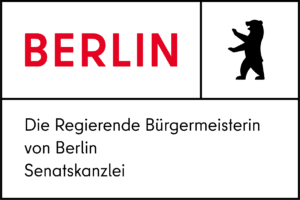This repository contains the code of the ServiceAgent:innen (service agent) static website. It is a guide for contemporary and agile administration work. It presents 8 modules that illustrate how governmental administration can benefit from digital and user-centric processes, in order to modernize themselves and work more effectively.
This static site is built with Eleventy (11ty). It uses the templating language liquid to combine together data and templates.
The pages are styles using Tailwind CSS.
The Javascript included in this page is vanilla and is minified using uglifyjs.
Install dependencies:
npm installStart development server:
npm run devA development server will be available at http://localhost:8080.
Layouts are templates that wrap other templates and surrounds them with markup. We use 3 types of layouts:
- Base: This layout contains the HTML present in every page. It includes, for instance, the HTML head and the meta tags, scripts and stylesheets.
- Content: This layout is applied to all the pages, except error pages such as the 404 page.
- Module: The layout applies to individual module pages and contains reccurrent elements such as the hero section or the module's methods.
The homepage is src/index.liquid. It is a simple combination of other templates. Data for this page is defines in the src/_data/ folder.
The modules overview can be found in src/modules/index.liquid. It leverages the concept of collections in the liquid templating language. The file src/modules/modules.json defines how module pages are generated. For instance, it makes available all markdown files tagged module available under the collection named module. This collection is picked up by a custom collection (defined in .eleventy.js) that sorts the modules according to the file slug (01 - 08):
eleventyConfig.addCollection("sortedModules", function (collectionApi) {
const sortedModules = collectionApi
.getFilteredByTag("module")
.sort((a, b) => {
return a.fileSlug - b.fileSlug;
});
return sortedModules;
});The custom collection can then be used in src/modules/index.liquid as such:
{% for module in collections.sortedModules %}
<li>{{ module.title }}</li>
{% endfor %}The individual module pages are generated using the markdown files found in src/modules/0{1-8}.md. The markdown's frontmatter and contents are used together with the layout src/_includes/layouts/module.liquid to create individual HTML pages.
The front matter is used as in this example
---
title: Service Design und Nutzerorientierung # required
socialMediaImagePath: /assets/images/modules/01-social-image.webp # required
socialMediaImageType: image/webp # required
socialMediaImageAlt: Modul 1 “Service Design und Nutzerorientierung” # required
abstract: Short summary of the module
example: Text for the example block of the page # required
example_image_alt: Description of what is depicted in the example image # required if example image is desired
methods: # array of methods, not required, often has only one entry
- title: Customer Journey
abstract: Short summary of the method
description: Detailed description'
doc_path: /path/to/accompanying/doc.pdf
further_reading: # array of resources
- title: Bürokratieabbau durch Digitalisierung
description: Gutachten Öffentliche IT und Fraunhofer
link: https://www.normenkontrollrat.bund.de/resource/blob/300864/753834/ea4c588fa9edf79304d947baf766e624/2015-11-12-gutachten-egov-2015-dokumentation-data.pdf?download=1
- title: Zufriedenheit mit behördlichen Leistungen
description: Befragung des Statistischen Bundesamts 2019
link: https://www.amtlich-einfach.de/SharedDocs/Downloads/Ergebnisse_Buerger_2019.pdf?__blob=publicationFile&v=2
hypotheses: # array of short hypotheses, not required
- text: Service Design erzeugt gute Angebote, die Stress für Mitarbeiter:innen reduzieren, Geld sparen und Ressourcen freisetzenThe assets such as images, icons, stylesheets, aso. can be found in src/assets/. If you want to use a folder inside that doesn't exist yet, you need to add it to the Eleventy asset pipeline.
We try to serve images that are optimized for different devices and screen sizes. If you want to add a new image to the site, consider this workflow:
- Create the image using you preferred software (e.g. Sketch)
- Export the image in both PNG and WEBP format in the following widths: 400px, 600px, 800px (you may skip some of the widths if they are not needed for your use case). Create exports with the following structure:
{name}-{width}.{format}, e.g.hero-800.webp - Your software might have not exported the images in the most compressed way. Double-check if further reduction of file size is possible.
- In the site, use the partial in
src/_includes/partials/picture.liquidto render the image. See the comments in the partial for usage instructions. - If the image will be rendered in such a way that the 800px-wide image does not suffize, consider adjusting the
picture.liquidto the new requirements. For our current state no image needs to be wider than 800px.
General data can be defined in src_/data/.
src/_includes holds all layouts and partials.
For testing we use Cypress and Cypress Testing Library.
Tests should cover the basic interactions of the website and ensure that all important content is present. Cypress tests should be added to cypress/integration/.
Make a test run:
npm run testLaunching the test runner in watch mode:
npm run test:watchIn .github/workflows/test.yml we have configured Cypress to run all pushes and pull requests to main. The passing of this test run is required for merging changes.
Thanks goes to these wonderful people (emoji key):
Dennis Ostendorf 💻 🎨 🖋 📖 |
Lucas Vogel 💻 📖 |
Lisa-Stubert 🖋 💻 |
This project follows the all-contributors specification. Contributions of any kind welcome!
Texts and content available as CC BY.
Illustrations by Lea Scheidt, all rights reserved.
|
Made by
|
A project by
|
Supported by

|

